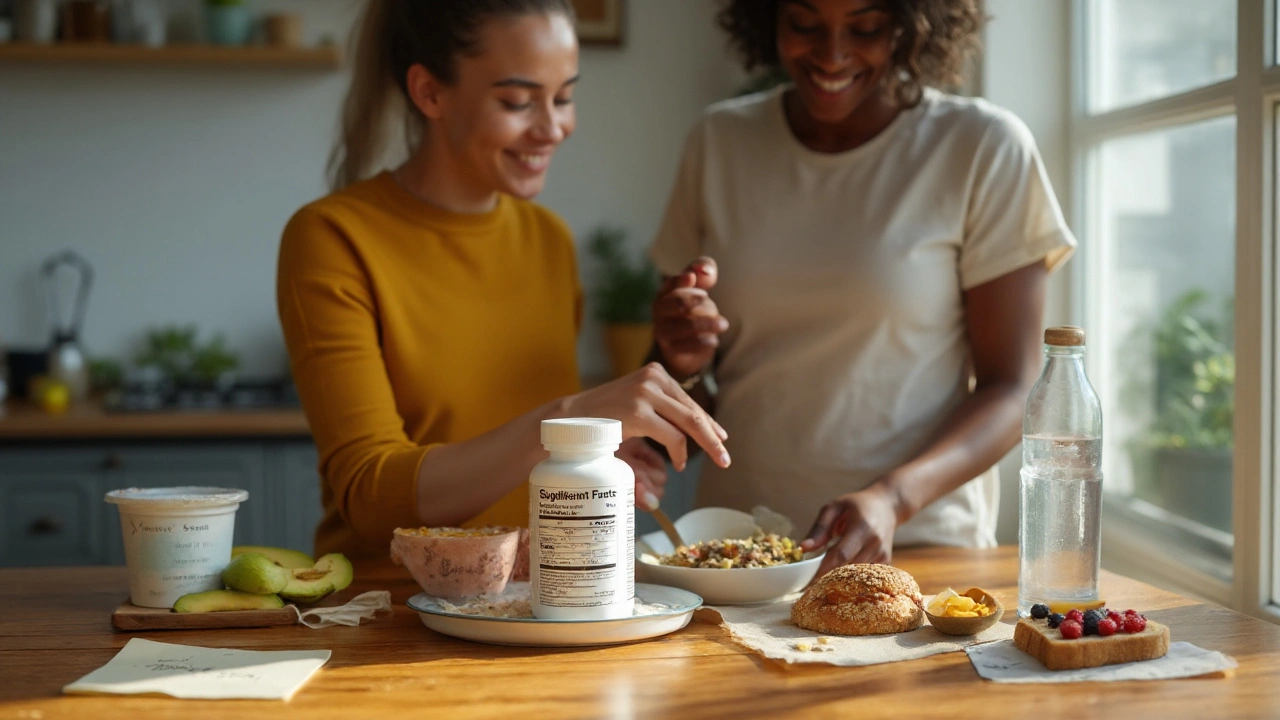Cholesterol Lowering Supplements: What Works and How to Use Them Safely
If you’ve heard that diet and exercise are key to heart health, you’ve also probably heard about supplements that claim to lower cholesterol. With so many products on the market, it’s easy to feel overwhelmed. Let’s cut through the hype and focus on the facts you need to know right now.
How cholesterol lowering supplements work
Most supplements aim at reducing LDL (the “bad”) cholesterol or boosting HDL (the “good”) cholesterol. The most common ingredients you’ll see are plant sterols, soluble fiber, and certain extracts like red yeast rice or berberine.
Plant sterols and stanols look a lot like cholesterol and compete with it for absorption in your gut. By blocking a portion of dietary cholesterol, they can lower LDL by 5‑10% when taken daily.
Soluble fiber (found in oats, psyllium, and some fruit) forms a gel in the intestine that traps cholesterol and carries it out of the body. Regular use of a fiber supplement can shave a few points off your LDL numbers.
Red yeast rice contains a naturally occurring form of lovastatin, the same drug you’d get by prescription. In moderate doses it can lower LDL noticeably, but because it’s essentially a mini‑statin, you need to watch for the same side effects—muscle aches, liver changes, and interactions with other meds.
Berberine comes from several herbs and works by activating an enzyme (AMPK) that helps regulate how your liver processes cholesterol. Studies show a modest LDL drop, and it also helps with blood sugar, making it a good choice if you have both high cholesterol and pre‑diabetes.
Choosing a safe and effective supplement
First, check the label. Look for a product that lists the amount of active ingredient (e.g., 2 g of plant sterols or 1,200 mg of soluble fiber). Anything vague like “supports heart health” without specifics is a red flag.
Second, consider third‑party testing. Reputable brands will have seals from labs like USP, NSF, or ConsumerLab. Those marks tell you the product actually contains what it says and is free of harmful contaminants.
Third, match the supplement to your health goals. If you’re already on a statin, adding red yeast rice could double up on the same effect and raise the risk of muscle pain. In that case, fiber or plant sterols are a safer add‑on.
Fourth, start low and see how you feel. Many people notice digestive changes with fiber or plant sterols—bloating, gas, or a need for extra water. Adjust the dose gradually and stay hydrated.
Finally, talk to a healthcare provider before you begin, especially if you have liver disease, kidney issues, or take medications that could interact (like blood thinners or cholesterol drugs).
Bottom line: cholesterol lowering supplements can be a helpful boost when paired with a balanced diet and regular activity. Pick a product with clear dosages, third‑party testing, and ingredients that fit your medical profile. Keep an eye on how you feel, and let your doctor know what you’re taking. With the right approach, you can support heart health without the guesswork.
Sitostanol (Plant Stanol) Guide: Benefits, Dosage, Side Effects, and Cholesterol Evidence
Clear, evidence-based guide to sitostanol: how it lowers LDL, ideal dosage, safety, interactions, label tips, and who should consider it-written for everyday readers.
© 2025. All rights reserved.

